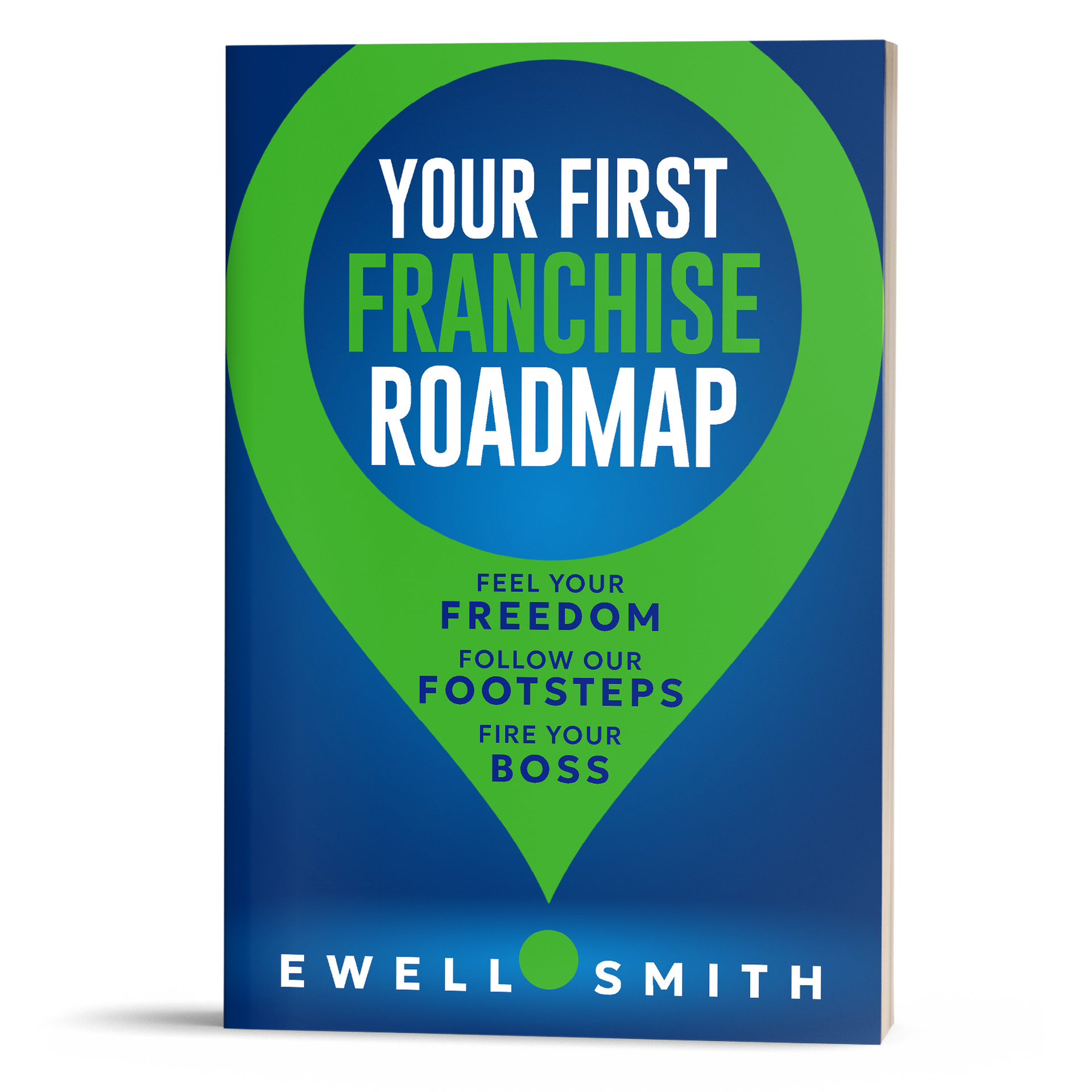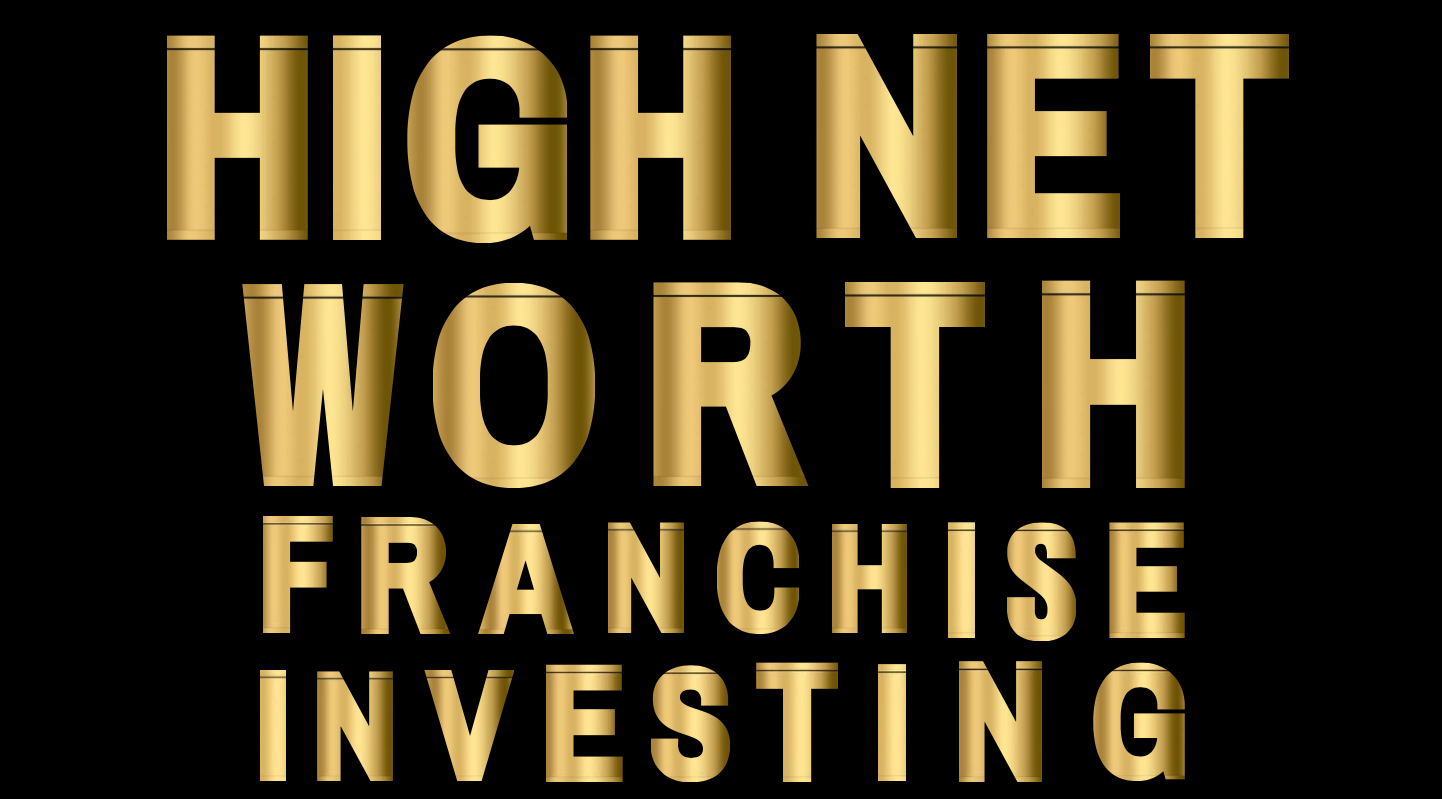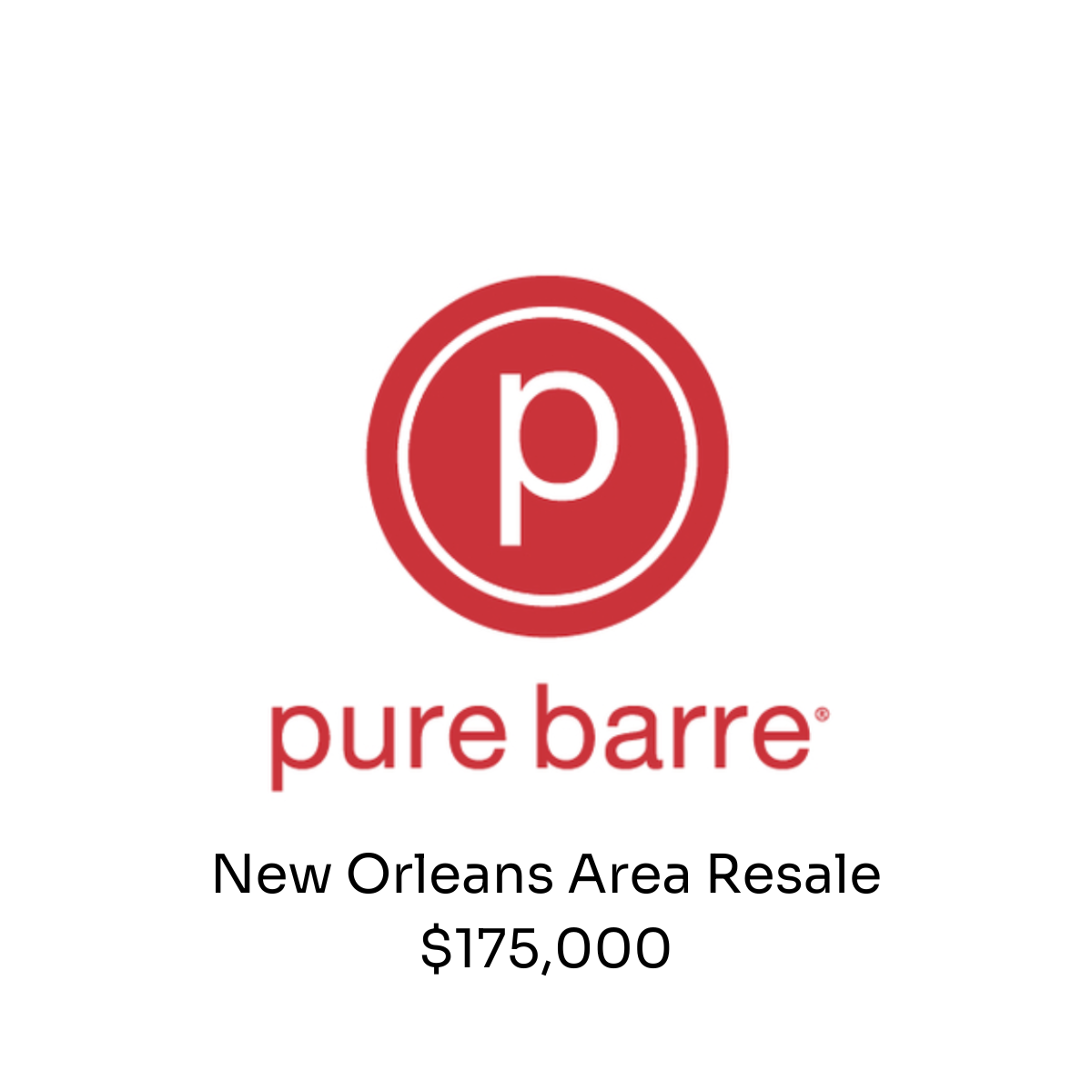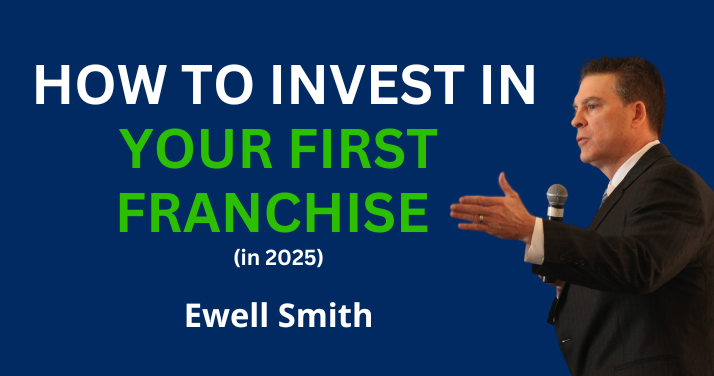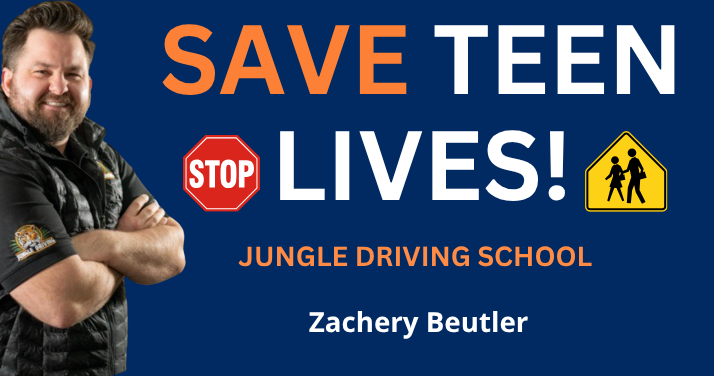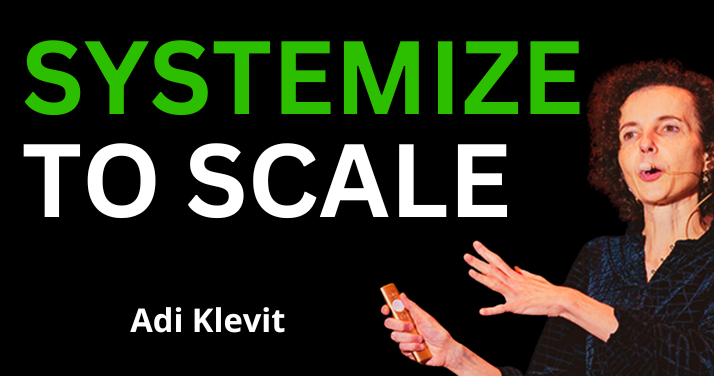December 18, 2022 by Ewell Smith
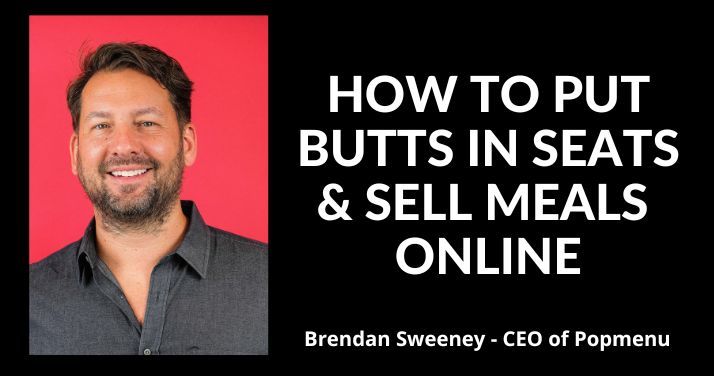
Your food is amazing!
Shouldn't your menu work hard for you online?
On this episode of CloseTheDeal.com Podcast, the lightbulb will go off for you on how you can really leverage your restaurant website.
Problem Brendan Solves – your old website is simply not selling like it should - that means lost revenue
3 Takeaways to Help You Close The Deal:
- How to really leverage your menu online to market and sell
- How to get some of your precious time back
- How to even leverage AI regarding staffing
Connect with Brendan Sweeney
Website: www.Popmenu.com
Linked In:
https://www.linkedin.com/in/brendanesweeney/
Close The Deal .Com Products We ❤️
Brendan Sweeney Show Notes
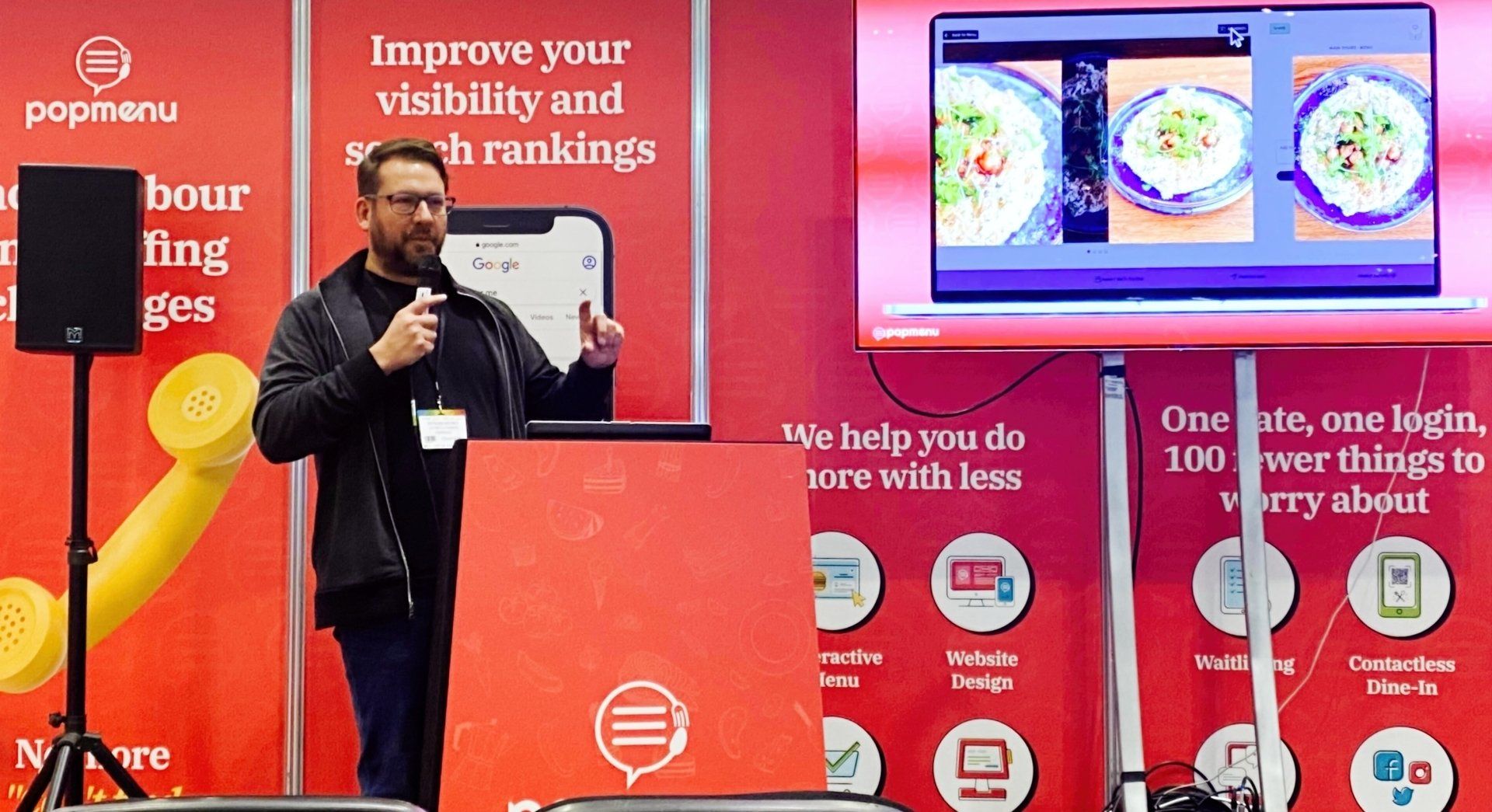
[00:00:00] Brendan: How you compete with other restaurants and say, this is why you would, this is why you would choose to dine with us is look at this offering. Look at the creativity in the menu. Look at the quality of the ingredients. Look at the plating. Look at and so we said, “Hey, if this thing gets presented in a way that's visual and that's dynamic and that feels like a modern e-commerce kind of funnel, the restaurants that do that are going to win more business against the restaurants that don't.”
Ewell: That is Brendan Sweeney. He is the CEO of Popmenu. If you are in the restaurant business, tune in because this episode is going to speak to you at the very core. If you're trying to put more butts in seats and you're trying to sell more online.
10,000 restaurants served.
Now you are listening to the CloseTheDeal.com Podcast. I'm your host Ewell Smith, and what I've witnessed working with his team, helping my sister-in-law is this. They've got the data from 10,000 restaurants. Websites that they have built. They know what marketing works, they know what tools work, and they bring it together to help you.
[00:01:11] In just a second, Brendan going to explain to you how the marketing works. He's going to give you his insights, and also he's going to share with you their AI and how they're using that to help restaurateurs like you. It may even help you reduce a staff. Or you could take that position and move that person into another spot that's critically needed in your restaurant.
Now we're going to find out exactly what is the problem that Brendan solves the overarching problem. You've got plenty of fires. This is a big fire. He's going to solve that. He's going to share what that is, and he's going to put your menu to work and help you make more sales. Now, let's get started.
Brendan, I want to welcome you to the CloseTheDeal.com Podcast. Let me ask you, where are you today?
[00:02:07] Brendan: Thanks for having me. I'm super, super excited to be here. I am in Atlanta, Georgia today. I'm actually just right across the highway from the defending World series champion, Atlanta Stadium
Ewell Smith: There you go. Uh, I got a little, well, and you got the Atlanta Falcons and that's, you know, I'm in New Orleans. That's not, um, that's
not friendly.
Brendan: for
Ewell: Yeah, We should probably leave that off the
Brendan Sweeney: avoid that today. Yeah.
Ewell: So, you know, I'm going to come back. I'm going to tease you some of the best barbecue, in my opinion in the United States is about , four hours and 45 minutes from you in a small town called Lata, South Carolina.
Now I'm going to come back to that, but I'm going to let that sit there just for a second and marinate. Let me ask you this question. What are you grateful for today? Or even a past that helped you get you where you are today.
BrendanI'm grateful for everything that's pretty generic, but I will say that I had a family very young and that gave me a tremendous amount of incentive to just incentive period. It gave me incentive to go to school. It gave me incentive to really push hard in my career so I could provide for them.
[00:03:20] And really, I mean, I was a bit of a delinquent before I had my family. And so yeah, my, my wife, my kids, they really are the reason you know, that I, that I pushed myself in so many ways forward, and so I'm absolutely most thankful for them, grateful for them.
Ewell: And along this journey we going to navigate a little bit through your journey, but I want to start with this question. You identified a problem in the marketplace. Based on your experience, your background, you saw an opportunity and then you came up with what I would say is a very unique solution. Let's, let's talk about that.
Layers of problems solved for restaurants.
Brendan: The problem, yeah. I think the easiest way to boil it down is it's a multifaceted problem, but what it comes, what it comes down to is restaurants have not been given great tools for engaging the digital world,
[00:04:13] And how this affects restaurants is in multiple ways.
Number one, what we see is restaurants try to cobble together a great digital experience or even a passable digital experience to give themselves a chance to capture, capture potential customers out on, out on the web. And they do it by putting together 10, 15 tools using freelancers, agencies, et cetera.
It's too complex. it's too costly, takes too much time, takes too much effort. And so, what happens is they end up being overly reliant on third party platforms. And so, when we started, it wasn't as much about ordering platforms like Door Dash, Uber Eats. It was way more about discovery platforms like Yelp and TripAdvisor and Open Table.
And so, the problem we're solving is we're giving them that first party tool they can use so they can address the digital world. with simplicity and with control and so we're helping them replace dozens of tools and resources like contractors and agencies with one solution, one bill, one login, and one support path.
[00:05:21] Ewell: Okay. Now I'm going to ask you to break that down a little bit in a moment that maybe the highlights. But before I do that, I'm going to mention the name of the restaurant. The restaurant is my sister-in-law's barbecue restaurant in Latta, South Carolina - Shulersbbq.net.
Brendan Sweeney: Okay.
Ewell: I offered to build her a WordPress.
Last Christmas, and she was excited about that. Their old site just wasn't doing what it was supposed to be doing. So, I started doing my research in January of last year, of this year, I should say. And as I was doing my research, I'm like, I stumbled across Popmenu, your platform. And I dug in to understand what you all did.
And I literally called my sister-in-law and I said, Lynn, I can't build. I'm pretty good at WordPress. I've got friends who are exceptional at WordPress. But the functionality of what you all do of your ability to drive online sales and to help put butts in seats is exceptional.
And I want to tee it up right there and leave it there for you. I know you all have a patent on this process as well. And once my sister-in-law. She said, I agree. So, she now has, when you go to schuls barbecue.net, that is her, that is your, that's your platform. And, it works.
Phenomenal. So, I mean, I'll let you explain what makes that machine work so well.
The main problem was so obvious. The menu.
Brendan: That's awesome that I love how you teed that up. Thank you. That's a lot of kind words and I appreciate that you are seeing what we're offering the way we hope. It's, I mean, that's the way it's intended. I think one of the best things anyone has said about Popmenu, especially as we've dealt with investors and things like that over the past few years is, hey, this is extremely obvious and I think, you know, like some of the best songs are the most obvious, the G C D chords and to have a technology that's like, wow, that's so obvious.
[00:07:23] I love that compliment because it just means that we had a different perspective and we were really curious and we thought, why are things this way? And the way, the thing that we wondered was why are we still using PDFs and text menus to convey what restaurants are everywhere else on the web?
Anything else you engage. retail, real estate, e-com, anything you're seeing photos right there in the purveyor site. You're seeing reviews, you're seeing ratings, you're seeing social validation. You're seeing all these things in one place. Why in the world in restaurants was it, or is it that you go to a restaurant website, you go and see a text menu on a pdf?
[00:08:07] And then you say, that's interesting, and now you have to go ten other places to find all the other stuff you want to, you want to know before you make the decision to book the birthday there or to book the anniversary, this and that. Our whole purpose has been to take all of these individual things that need to be done, guest facing in a digital world to give you the best chance at acquiring that traffic that's looking for.
You know, Cajun or Creole food near me and, and we want to make it so you're, you can be as unreliant on third party platforms as possible. And so, what we started off with was this idea that the menu is the center of the universe for restaurants. The menu is your number one sales tool, is how you differentiate.
It's how you compete with other restaurants and say, this is why you would, this is why you would choose to dine with us is look at this offering. Look at the creativity in the menu. Look at the quality of the ingredients. Look at the plating. Look at and so we said, “Hey, if this thing gets presented in a way that's visual and that's dynamic and that feels like a modern e-commerce kind of funnel, the restaurants that do that are going to win more business against the restaurants that don't.”
[00:09:17] We started with that and we've just expanded out as we've worked with more and more and more restaurants. We now work with over 10,000 restaurants nationwide, mostly in the US. There's some outside, but what we started to do as we started to work with restaurants, we started to understand more and more about the struggles that restaurant owners have approaching digital and we just started to build them all into the platform, and so we started with this menu experience, which doesn't just sell the, the offering.
It's also an engagement point for consumers where they can click on different dishes and look at the, and look at the pictures. They can write reviews; they can share the dishes. They can do all these things that help us understand their preferences. They can also become part of the CRM, which, you know, we call 'em followers or VIPs and, and we bundle that all into one.
[00:10:09] And now, A lot of things are happening. One, you're selling your offering better than you ever did through a pdf and people are getting hungry going through your website instead of jumping out to Yelp or whatever to get the information they want. Now you're also starting to capture more and more people into your database.
Automatically, you're starting to know more and more about them. What are they commenting on? Were they sharing things like that? And then we said, Okay, the next step is, , how do you market to people? And so, we built in mass email, we built in automated email, we built in texting, we built in social integration.
We built in Google My business integration. It's like what are all the different ways restaurants are having to get out there and get in front of people? Cause if you only do one, you're missing a ton of people. But if you do them all, you're spending a ton of time on it. And so, we added the menu. We started with the menu.
[00:11:02] We added marketing. We did the whole website too as part of it, like you mentioned, you know, a lot of people, I mean, I was building restaurant websites by hand twenty years ago before WordPress. Like, I would copy my last site and start from there. And so, it's been going that way for a long, long, long time.
Then they added ordering online to drive leads.
Right. And, and so yeah, menu, website, marketing tools, covid hit, we added ordering. We had our whole team spend two weeks on it and built online order. . And we've just gone on and on from there. Because the biggest thing we've seen when it comes to restaurants and how they engage with guests and market to guests is it's just all these point solutions that only do one thing.
They don't talk to each other, they don't give you a consolidated view of the guest and so that's, I would say that our process for getting to where we are now has been, we built something that we felt like could help. We got it in front of enough restaurants that they trusted us to give us feedback.
And we've been in this ever increasing feedback cycle since, where we just continuously discover ways we can help restaurants in. We're to keep putting more and more of that into one place.
[00:12:03] Ewell: And you all bring it all together. I walk through this whole process of introducing it to my sister-in-law, and then working with your team as she onboarded. I'm also an admin to the site, so I can see the leads come through or I should say the orders come through.
And then it's that dashboard. It's, it's anybody who works on any kind of website, I mean, you all have made it so easy for me to go in or my sister-in-law to go in and she can make real time update. Without having to call her agency or call me, she can do it herself. It's that simple. And this is what I think was the turning point for her. It, it was that simple. She could see it, she understood it. Once the light, when the light bulb goes off with your platform, it's hard to turn it off. Like so many small mom-and-pop restaurants, they have their nose to the ground just trying to putting out fires, just trying to keep the business going. And this is during, you know, this is coming out of Covid as the beginning of this year that we were doing this.
[00:13:07] So she was stressed of taking the time to do this, and I said, this is worth the time. I promise you now it's paying dividends already so that part, that dashboard though, makes it so simple to do. What I want to do is I want to, break here. We're going to come back here in a second. I want to go over your why, what you do, some of your background, how, you know, you mentioned you've been building sites for 20 years.
I didn't, I didn't even realize that and that makes sense the way you are today at the level you are today. You're working with 10,000 restaurants. Not only do you have the experience, you've got a wealth of data that is a gold mine. I'd love you to share with the audience some of the basic things.
Obviously, we want to get people to their website, to their Popmenu website, and we want to put people in the chairs. I'll ask you what are some of the basic things that restaurants can do to market their restaurants that you see work really well?
[00:14:04] That a lot of people just don't take a. So, we're going to break right here and we'll be right back.
BREAK
You've heard me talk about it. I love it. My blood work is in the green. It has a big part to do with it because I'm getting 75 minerals and vitamins every single morning in the easiest way possible because they make it super easy and the product is called a G one. Visit close the deal.com. Go to the show notes for this episode with Brendan.
You'll see a special link there that's going to give you some savings on this product. And they're going to give you five free travel packs as well, and a year supply of K2 and D three. Now back to the show.
Brendan. Good to have you back when to close the deal.com podcast. I love your platform.
My sister-in-law loves your platform. Why do you do this? And what is the journey that got you to this point, to become such an expert in this area? And then you saw the obvious you stated the obvious but nobody ever saw it. And you saw it, your team saw it.
[00:15:18] Brendan: The journey for me was I had a family really young, as I mentioned earlier. needed to pay bills while I was going to school and I got into office work, you know, cu cubicle works pretty like I was 19 and started to, and this is really like dawn of the internet, you know, and so I had a couple of jobs that were in marketing.
I was majoring in communication and so this was just an area that, that made sense for me marketing communication and right maybe three years into my, work career, like the internet exploded and I was fascinated with it. And so, I actually learned to build a website for my band at the time.
It was, uh, hey, we need a website, and I built. Awful piece of trash, but I learned a lot from it and this, this is when everything was manual, including FTPing files and stuff like that and so I kind of had a little bit of a jump on learning about the internet and then I started to apply that to the job that I had.
Career transformation - Career Builder.com to today
[00:16:17] So I was working at a recruiting company and I ended up, managing our website. And then I got recruited into a company called Headhunter.net, which became Career Builder, I remember getting hired and telling my wife like, I'm working at an internet company, like this is a thing now you can work on the internet.
That's how long ago it was, doing that and was in marketing and was going to school at night and just flash forward a while we ended up selling that company. We went public and then we got bought. And during the time when I was waiting for the deal to close, I knew I was leaving the company.
And so, I picked up a bunch of tutorials and learned more and more about how to build websites, how to do design e even how to do flash at the time, which I, I ended up being pretty good at flash. I was bummed when it kind of went. But anyway, so I got more and more technical. I started off with a marketing background, dabbling in the web.
[00:17:08] I got more and more technical, and then I started to do on the side because I needed, I needed money for the family. I started to do small business websites, and so doctors' offices, restaurants, all kinds of different stuff. And so that's the foundation for, for what I bring to Popmenu. After that happened, I ended up taking all product roles, which, you know, at the time, product wasn't really, it was more people thought of consumer product, you know, like, uh, like General Mills and stuff like that.
As a, as a role. They didn't really understand what product is technology. Product is really making sure you're building the right thing and you're building it in a way that's usable. And so I ended up spending basically 15 years at Career Builder. continually building my capacity for product.
And by the time I left, we were. Um, 3000 people and we were in like 30 countries, something like that. And the product we were building was being used by 30 million people a month in all these different countries. And so that level of sophistication and understanding how to build internet product at scale built during my time.
[00:18:16] At Career Builder, I got recruited into a company called Commission Inc, which is in this, the Atlanta area. And it's very much, it's very similar to what Popmenu does. Obviously it preceded it. But it's for real estate teams. And so I went to commission Inc and headed up product, and we basically re-platformed what they had, kind of reimagined it, packaged it up, and we ended up selling the company.
And so, in a two year period, it was like a crash course in SaaS. And how SaaS can help a local business take control back from a large, technically sophisticated third party platform. In that case, we were helping local real estate teams take control back from Zillow, and so all of this gave me a foundation that I could add to the consumer idea we had for pop venue and say, okay, now we can help.
[00:19:03] Again, a local business. This time, restaurants take control back from third party platforms. At the time, it was more Yelp, TripAdvisor, Open Table. And as time has evolved, it's also Door Dash, Uber Eats, you know, Grub Hub. And so that's kind of been the journey and so my, myself and the other three co-founders that I had, we all had this kind of basis of capability and experience that we could now apply to a new space and, yeah, I mean, we thought, we thought the fact that menus were text was like an obvious change that was going to happen.
It was like, and at the time, like the original consumer idea for Popmenu started in 2014, and at the time we were all moving heavily to using our phones for everything near me.
Searches were blowing up, you know, whatever Creole near me. And, and it was just, it seemed very obvious to us that. It's really hard to use a PDF on a phone. It doesn't convey the product or service in a way that really gets you excited about going and making a reservation or making an order.
[00:20:05] It was just like these two things are going to come together where consumer behavior is just going to move past what people want from restaurant websites. And so, they're going to need a tool and so that's kind of the journey. And the other, just the other part of it.
The biggest skill we brought into it was learning how to surface what people would value with clients and consumers. Cause there's a lot of noise, there's a lot of ideas, there's so many things out there that could make sense. But we spent the time to surface what really will move the needle?
What really will impact a business for a restaurant? That's the number one thing we bring is that you can't just ask somebody, hey, what do you want? They don't know, you know, and it's not their job. They, they do hospitality and so, but if you can observe and listen and see what their world is like, you find gaps.
And some of these gaps can't be helped by technology, but many of them can. And so, we found many of those gaps and, and have done a lot of work.
Ewell Smith: That's what I was thinking, like when I was going to build that site for my sister-in, I said, you know, I can do this, but the functionality all the thought that you all put into it, and all the pieces. Now, I wouldn't even know how to begin.
[00:21:12] I'm not a coder. I wouldn't even know how to begin pulling all those pieces together like you all did.
Important elements of the website - ADA, SEO, mobile responsive
Brendan: Well, and it's also something that just when you build a website like I used to and like what you're talking about, that's a point in. snapshot, it's not evolving. And the truth is the web is evolving every day. And so, the things that you have to build into the consideration of how you're setting up your website, SEO is a massive thing.
ADA compliance, ADA conformance, I mean, we've had many, many, many of our clients who've been, you know, before they came to us, especially in California, they might have. A potential lawsuit because their website wasn't readable, you know to a screen reader for blind or visually impaired people.
How is it working on mobile? Is it optimizing the photos so that they load fast? You know, like on and on and on. It's just way more complex. I know that I wasn't thinking about 1% of that 20 years ago when I was building sites by hand. And so, we just keep evolving that. And so, our clients that come on board, it's not just that they get a website which is just one component of what we do, but it's that we're constantly evolving it to stay fast, to stay relevant, to stay so that it's really performant regardless of what legal or kind of performance changes are.
[00:22:27] Ewell: So, it makes sense. Come from the real estate side because those guys were always forward thinking. Their websites drive leads. Their whole purpose is to drive leads for agents, right? Or drive leads to sell the house, whatever it is. And that's kind of what the mindset is. When I saw your site, I'm like, oh my God.
Popmenu - how did the name come about?
Okay. That's what, that's exactly what this does at, you know, a very high level. Gotta ask you a question, how did you come up with the name Popmenu?
Brendan: Uh, I'm laughing because Mike is, he's one of my co-founders. He and I have had several ideas together, and the number one thing, well the number one thing we would always argue about is the logo for it, and the number two thing would be the name. And so, while we were kind of kicking around the Popmenu, I what the idea for what became Popmenu and.
We're, we're developing prototypes, we're ideating, we're, you know, we're, we're doing what product people do. It's, it's basically just continuously updating you’re thinking. We're also looking at names and I, it's funny, I can't remember a single other name now that we had, I can remember some from our old ideas for other businesses, but, but I do, I actually still have the g chat where I sent to my wife.
Hey, I have a name for the thing that Mike and I are working on. It's Popmenu. I think it was a little bit of how I envisioned and how we kind of thought through the menu working is like, you got these pictures, but then there's popup stuff, like popup video, you know, where it's like, here's interesting information about, this dish.
That would be cool to put all in one place. And so, I think it had to do with the, just, it should, first of all, the menu, you should pop. You know, it should be something that stuns people and hits. And a lot of ours are just do an unbelievable job where I'll be demoing a, a restaurant and then it's like, I have to eat there this week.
[00:24:12] Like it looks too good. Lafa in Atlanta is a Vietnamese place that I can't look at the pictures without getting starving. So yeah, I think it's a little bit inspired by pop-up video, but just this idea that you're going to have this additional information in different layers on top of the picture of the.
Ewell: Well, it encapsulates what you all do, bringing that menu to life. So that's what I had to ask that question.
All right, so, And, and for restaurant tours or chefs or anybody in the restaurant business, specifically the restaurant business. But this, the lessons here apply to every business. The restaurant business is so unique and such a niche.
And sometimes, like my sister-in-law brother, they get so wrapped up in the day to day, and that's the nature of that business. They're in the weeds, all the restaurants. I don't know. I've worked with hundreds and hundreds of restaurants, and that is the nature of the. So what you all do is you take that off of them, but they lose sight that at the end of the day the website is to sell.
[00:25:08] And that's what you all do. You're selling the customers on the journey to get them, physically get them to the restaurant or to pick up their phone in order right away. Which is great. What are some tips that you can provide to restaurant tour? You see that maybe you aren't used enough just because probably they're busy trying to keep their restaurant going.
Brendan Sweeney: Yeah, it's definitely because they're busy. I think it's the hardest job in the world. I think it's the busiest job in the world. It's got so much breadth to it and so much random stuff goes wrong on a daily, weekly, monthly basis that you have to address that it makes it, So the last thing you want to do is say, Now let me go and check out some new technology and it's also, if you're a real, if you're a super hospitality person, I mean we have lots of clients who are hospitality operators and also engage in technology, but it's not exactly like hand in hand, right? Like little bit different. That's the reason why it's so hard. I would say the overarching tip that I have is the restaurants.
[00:26:14] I see the operators and groups that I see who are doing much better now than they did pre-covid and are accelerating and they're opening new locations. They're buying maybe distressed hospitality brands. They are leaning into the technology the most. And it's not that you have to make that the primary focus of your job, but you do have to make space for evaluating and implementing tech and look at it as an investment and the yield is increase in margins and increase in quality of life. And also, more and more talent is the hardest thing to get. And if you don't have the latest tools, you're going to have the hardest time getting talent to come in and stay.
Restaurant stores get sold to so much. I totally, totally get why so many people do not want to have a demo, do not want to have a sales call. Don't want to engage at all. I get it. And there's healthy skepticism of technology companies for sure, but things are changing.
[00:27:20] A lot venture capital and private equity has come to this space. Other restaurant tech vendors are getting better and better and better at developing their technology. There's a lot out there that actually helps. And if you make the time to really understand it and give it a chance and at least trial it, you're going to put yourself in position to earn more and more points of margin.
And until, like I said, improve your quality of life. Because you're going to get time back that you won't get if you don't invest. In evaluating what's out there now, and then I would just say , super simple tips on the marketing front. I can't tell you how many restaurants I've run into where it's like there's an agency. And they've got, you know, they, they start pulling these strings. They start pulling the passion string and saying, you need to convey your brand in this way and it's gotta evoke this, this, and this.
[00:28:10] And, you know, the communication has to be this, this, and that. And by the way, 10 grand a month retainer or whatever it is. I think in general; everyone's been made to think marketing has to be a lot more complex than it actually has to be.
Ewell: Think of.
Brendan Sweeney: you, like you mentioned, we're working with over 10,000 restaurants.
[We get to see what everyone's saying. We get to see how they market. And the truth is, marketing from restaurant to restaurant is pretty similar. Whether you're high end, fine dining, FSR, whether you're a bagel shop, whether you're a food truck, the principles are the same. You need to get what's special about you out in front of.
And you need to be consistent about keeping that in front of the people who already love you. And so, the number one thing I see people struggle with and not capitalize on is, man, there's all these customers who've already come. They already love you if you're not storing them in a way where it's easy to message them.
[00:29:08] And if you're not messaging them consistently, you are losing. flat out your missing opportunity. And it doesn't have to be super complex. You don't have to have a big email with all this text and imagery. Show them food pictures. Tell them when there are events, share offers with them, show people having a good time at your restaurant.
How to best market the restaurant.
Do it visually. Those things if done consistently, they just flat out work. And we've had, I mean, we just have thousands of restaurants that have done. Very simple things and yes, we offer a product called Boost. That's basically, we have some people and some templates and some processes that are creating content for our restaurant.
So, on top of the platform, we're going to do some social posts for you. We're going to do some emails for you and, we don't charge a lot for it, especially compared to an agency, but it's not, oh, let's really get into deep creative discussions. It's like we're going to put food, pictures, and events and offers in front of your client.
[00:30:04] Consistently, And guess what? They're, it's going to maximize how often they come to you and how much they spend with you. Marketing is way simpler than, we've been led to believe it needs to be.
Ewell Smith: I agree. It's, it's so easy, especially for a high end rush to get caught up in the beautiful food shots. I mean, they can focus on just that one thing disregard everything else, you
Brendan: For sure and I would say that's a related one where we basically coordinate photo shoots, we negotiate rates, we set up how are they going to approach it, what's the timeline going to be? We make it a dead simple process so that our clients don't even really have to think, just produce the food and it's going to happen.
I can't tell you how many times I've heard of a photo shoot. Or, or someone's come to me and said, oh, uh, my friend does food photography and they're super reasonable. They'd love to be part of your network. And it's like, yeah, they only charge like 3000 bucks for half a day. Like, that's not, that's not in our wheelhouse.
Uh, you know, that that's not what we're charging. And the truth is great visuals make a big difference. And it doesn't, it also doesn't have to be super complex. And yeah, some of those photographers will hate me for saying it, but it's like, Man, it shouldn't be five. get some pictures of dishes together.
[00:31:09] And we even have some sites that have unbelievable photography done by great Android phones. Great. You know, modern iOS, like those things. All of it can and should be way simpler than it's made to be. And it's really, the importance is consistency. Is that message going out every week?
Is that message going out? You know, I don't think every day makes sense, but as long as it's consistent. And you're getting in front of people three or four times a month, you're going to maximize how often they're coming to see you.
Ewell: So, you got so many tools in the toolbox that you all used. And there's one in my, in my mind, I think people really leave off the table and I'll, and you can tell me, I'll, I'll save that. This is what you say. Is there one of all the tech tools you have, is there one that you, you wish you would see your customers use more?
Using AI to lower your labor costs.
Brendan: Yes, but a part of that's because it's pretty new. I mean, we launched it a year ago and it's every quarter we're kind of doubling and tripling how many people are using it. We have AI based phone answering. Um, that, that makes a, just one of those problems that everyone threw their hands up and said, there's ah, there's nothing you can do.
[00:32:15] People always want to call restaurants and restaurants can't answer the phone and the truth is people just want inform and they don't care anymore if it's a bot now, they don't want to go into some Comcast type, you know, pressing, waiting for the menus and this and that. It has to be conversational.
I'm not trivializing it we have two machine learning masters from Georgia Tech who led the charge to build this phone answering and they're highly, highly skilled and it. A long time to, to get it to be released. But in the grand scheme, it's not the biggest technical trick to say, well, we have all this data about the restaurant already.
We have all your menus, we have your hours, your location. We have all this Google My Business information. It's not a huge trick to say, you know, when someone calls up and they ask a question, convert that to text, hit it against the data we have, take the answer, convert that back to voice, and, and send it.
[00:33:13] they'll all say, hey, you don't know what you're talking about. It is hard. But the truth is it makes a massive, massive difference, especially in a time when it's really, really hard to get people. And as we spent time with restaurant owners exploring how they feel about their phone answering, we found many of owners would just forward all calls to themselves cause they didn't trust the team to answer the questions the way they wanted anyway, because the turnover and things like that.
So, our AI based phone answer is basically an employee that answers every single call. Doesn't matter if it's three in the morning, doesn't matter if it's 50 calls at the same exact time. It'll answer every question the way you want them to, including super customized answers. Um, that you're able to just basically set up the answer and it's going to answer it every way or every time.
[00:34:04] That same way. If someone asks for a reservation, it's going to send them a text with the most efficient way to make a reservation. If they ask for an order, it's going to send them a text with a link for the most efficient way to, make an order and it ends up coming out to like 47 cents.
You know, and they never call in sick. And so, what I love is, I mean, this is one that I think is an interesting one because most people in hospitality are like, Man, I don't want a robot , you know, answering my phone. But it's like, neither do I And, and I'd rather have a person, but that person's not there.
And if they are, you're not going to, you're not going to pay them to sit there and answer the phone, like they've got their other higher level things to do. What we found is 40% of consumers. We'll abandon a restaurant if they call and can't get an answer and they might be asking about allergy information.
They might be asking about, do you have, you know, vegetarian, do you have gluten free? Do you have a, a reservation available? On and on. This thing just answers those questions and it, it always has the human fallback. If someone says, I need to talk to somebody, well, we'll pass the, we'll pass the call on to somebody.
[00:35:09] This is one of those that's like, uh, it's, it's a no. And, and it saves so much time. It frees up your team. And we've had such good feedback from restaurants who've, turned it on, that I wish, of course, as a person, you know, running this company, I want as many people to use that product as possible.
But I also just love hearing how it's helped people. And so, I'd love for more and more people to get help by the, by the answering. So,
Ewell Smith: that makes a lot of sense. I'm from the outside looking in and now that you say that, it makes all the sense in the world. I was going to say, I would suspect this is a guess. I mean, I could be wrong. Your data could completely blow me out. The water email, do they do the restaurants, are they using the email piece efficiently?
Because that is so, I mean, they, they build such a robust email list quickly because people are ordering with their credit ordinary email.
Brendan Sweeney: Yeah, man, I think this is one that, you know, a tool like Popmenu makes. a hundred times easier because otherwise, like if you're, I would talk to restaurateurs when we first started offering our email, and I'd say, Tell me about email. And they'd kind of get sheepish and say, wow, I used to do it and I'll get back to it and I haven't done it in a while.
[00:36:18] And it's like, I get it. You know? I've used MailChimp and I've used Constant contact too, and. I'm a product person who's been working on the internet for 20 plus years. It's hard. You gotta make a template, you gotta de-dup your list. You gotta come up with all the content, this, this, and this, and, yeah, that's a lift.
And so most people don't do it. But that's why we built it in to where you can just type a subject and you can type a type of body, attach a food picture, include an item, include an offer. It's all super easy. And then you just hit a button and it blast your whole list.
Leveraging email that gets a 50% open rate.
The real magic is in our smart messages.
Ewell: And people want that content That's something people want to get so I imagine the open rates are probably pretty solid for that.
[00:37:01] Brendan Sweeney: This is, this is the secret on that is because we're capturing personalization data and, and because of, of how we're getting the right to contact from people and things like that. Like it is a more personalized message. And especially I'm talking about our automated smart messages, which you don't have to do anything as a restaurant.
There's like 12, 13 of 'em and they just run and they just keep people engaged. Those, because it's so personalized and because it's directly from the restaurant, the open rates are well over 50% and the click through rates and, and the average, according to MailChimp, the average hospitality email is getting open at like 17, 18%.
Um, they're also getting like a 1% click. . Ours are, you know, 2, 3, 5, 7 click through rate, which is unheard of. And, and it's just because it's simple, it's personalized, it's relevant to them and it's consistent I think we sent out on behalf of our clients about 13 million emails last month.
So, it's a thing like, is email dead? Well, yeah. If you're sending every single day, 10% off, come to the restaurant. Well, no one cares about that. They're blind to that. Like that's a, that doesn't feel very relevant to them. And it's brute force, right? You're just sending 'em out because you gotta do it So many to, to get a, um, to get any kind of return.
[00:38:19] Well, with ours, because it's so much more personalized and targeted, you just get more response. And so, if it's, hey, Brendan, here's that burger we know that you love because you told us you love it. And if you come in on Tuesday, you get 50% off on that burger, that value might actually be smaller than 10% of the overall check.
But it's so much more relevant because that's the burger that I love and now I saw the picture of the burger and now I'm hungry. It's just more effective. Emailing is one of those that people don't understand how powerful it still is. We do texting through the platform too, and texting is even better.
It's not utilized any, there's more like a million texts coming out of our platform right now. But man, email is just so, it's just so effective when done right and when personalized and we feel like we can keep getting more and more and more personalized, more and more relevant and it, and they'll just continue to perform better.
[00:39:09] Ewell: And at the end of the day, this is about selling, and that's what you're doing. You're helping facilitate the sale to get the person into the Russian or on their phone to order, order a product. The website address for you all is Popmenu.com. Is that right,
Brendan Sweeney: That's right. Popmenu.com
Ewell: Well, Brendan, this has been fantastic. Uh, we going to stay in touch. We got a number of restaurants coming on board in New Orleans with your product. It's exciting to see that happen because I think that we're going to see a wave of it happen across this city once people start realizing how effective this.
Brendan: I love that.
Ewell Smith: as I, I see blue sky for you guys just for a while because there's so many restaurants that need the help and you all provide a genuine solution for so many people. Thank you.
Brendan: appreciate the kind words. Also thank you for the chance to get to tell a little bit of our story here. It's been. Okay.
Ewell Smith: Absolutely.
That is a wrap, episode number four of the CloseTheDeal.com Podcast. I want to thank you, uh, you're here again with us at the very beginning of this journey, so thank you for investing your time. I believe Brendan brought a lot of value to help any restaurant tour. And the question is, is why shouldn't your menu work for you?
[00:40:23] You have a pretty website. That's a good. Having a pretty website that sells. Now, that is a fantastic thing. Make sure to get in touch with Popmenu or reach out to me. I'll put you directly in touch with their team and make today, make this day a great day. We got some great episodes coming up. Talk to you soon.
Subscribe
Be The Boss.
Your Gift For Visiting: Grab A Copy of Your First Franchise Roadmap
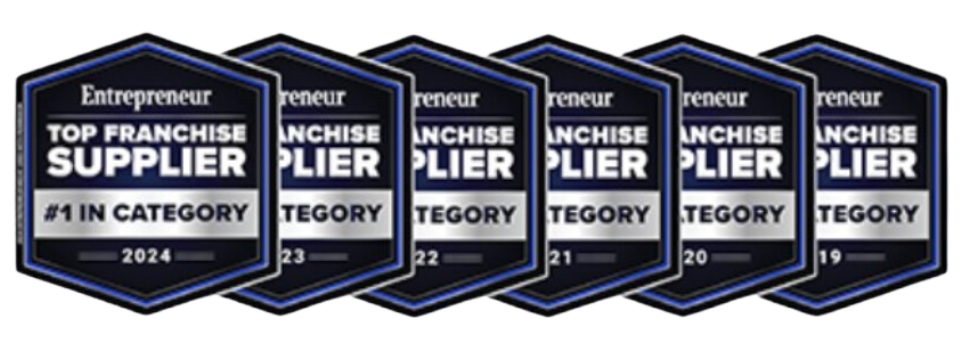
Close The Deal Leveraging
Multi-Unit Franchising. Click here.
Close The Deal Resales:
City Wide Franchise - Real Estate Management
Nassau, NY
- Total Gross Revenue 2023: $1,300,000
- Number of Employees: 2 (1 Account Manager, 1 Night Manger)
- Resale Price is $450,000 (includes $120,000 initial franchisee fees)
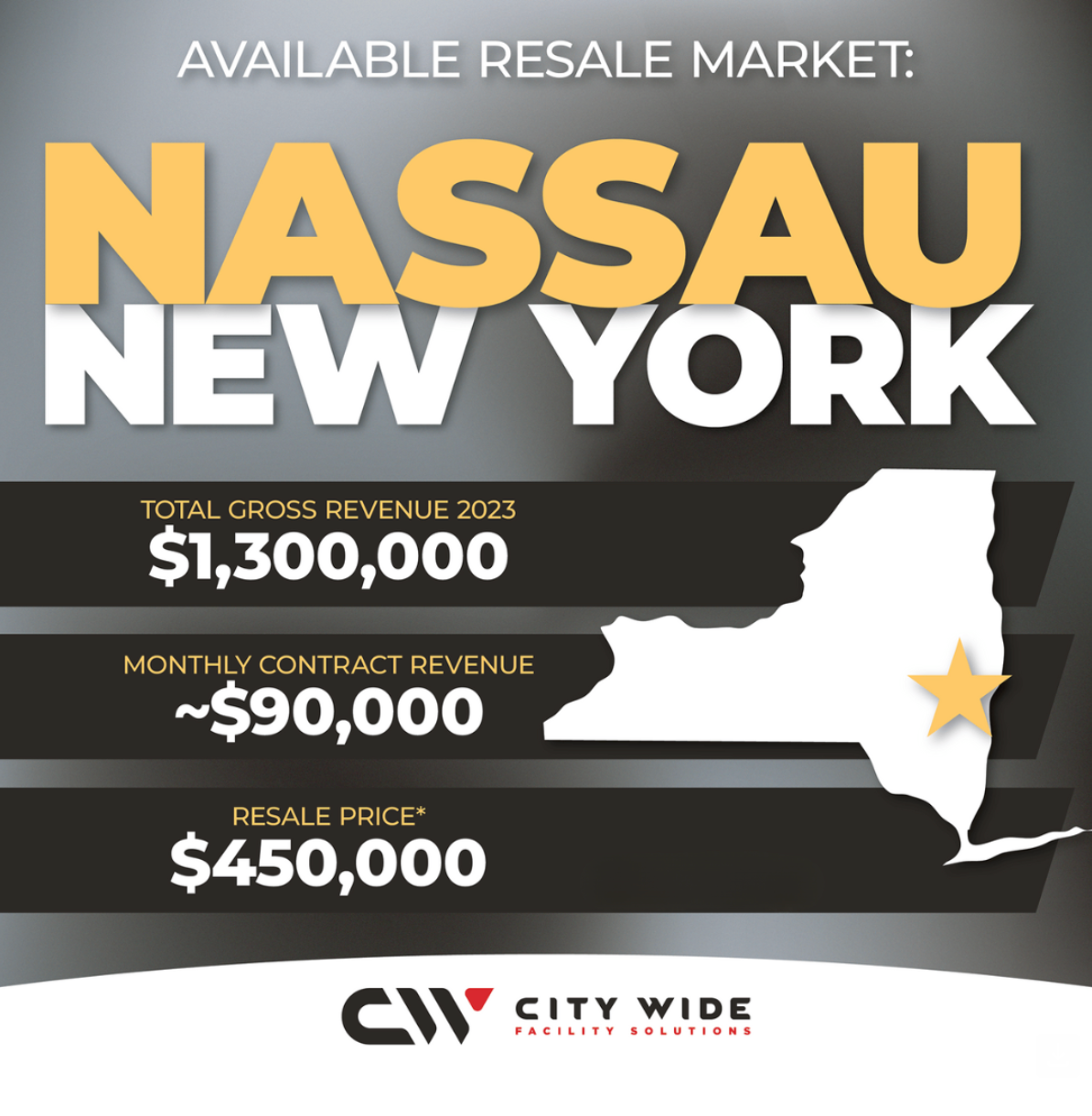
Top 10 Close the Deal
Franchise Resales
May 2025
Waggles Puppy Boutique - Roanoke , Virginia $425,000
Window Genie - San Antonio, Texas $300,000
Zoom Room - Huntington Beach, California $500,000
1-800 Radiator & AC - Amarillo, Texas $1,200,000
AdvantaClean - Bethel, Ohio $570,000
All Dry - Houston , Texas $430,000
AlphaGraphics - S LA County, California $1,800,000
Barrel House - Coralville, Iowa $1,800,000
BFT - Richmond Heights (St. Louis), Missouri $430,000
Budget Blinds - Huntsville, Texas $500,000
Over 173 Franchise
Resales Available
Learn more about the opportunities above and discover other resale opportunities:
About The Author: Ewell Smith - Certified Franchise Consultant / Publisher - Close The Deal / Host - Close The Deal Podcast / Author - Your First Franchise Roadmap - Ewell serves aspiring entrepreneurs and Veterans considering a franchise. To learn more, contact Ewell.



